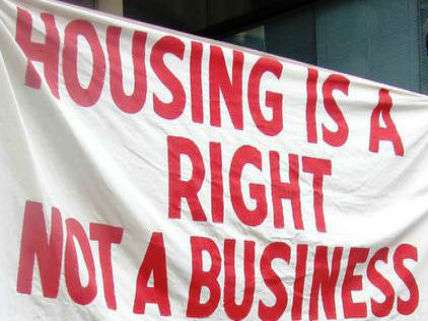'The poor are better off when we build more housing for the rich,' reports Washington Post
Says the notion that expanding the housing market benefits both poor and rich sounds "counterintuitive"

The WaPo is today reporting a study by the California Legislative Analyst Office (LAO) that reports the apparently astonishing fact that increasing the supply of a good tends to lower its price. The study concluded, "Encouraging additional private housing construction can help the many low–income Californians who do not receive [low-income housing] assistance. Considerable evidence suggests that construction of market–rate housing reduces housing costs for low–income households and, consequently, helps to mitigate displacement in many cases."
The Washington Post article begins:
To low-income residents and the groups that fight for them in expensive cities, new market-rate housing often feels like part of the problem. If San Francisco and Washington are becoming rapidly unaffordable to the poor, why build more apartments for the rich?
New housing, these voices fear, will only turn affordable neighborhoods into unaffordable ones, attracting yet more wealth and accelerating the displacement of the poor.
Then come along those pesky economists:
Economists typically counter with a lesson about supply and demand: Increase the sheer amount of housing, and competition for it will fall, bringing down rents along the way to the benefit of everyone.
It is understandable that skeptics raise their eyebrows at this argument. It's theoretical, based on math models and not peoples' lives. It seems counterintuitive — that building for people who are not poor will help the poor.
Not based on people's lives? Counterintuitive for whom? Never mind. The WaPo article goes on to observe:
In tight markets, poor and middle-class households are forced to compete with one another for scarce homes. So new market-rate housing eases that competition, even if the poor are not the ones living in it. Over time, new housing also filters down to the more affordable supply, because housing becomes less desirable as it ages. That means the luxury housing being built today will contribute to the middle-class supply 30 years from now; it means today's middle-class housing was luxury housing 30 years ago.
Well, yes. In addition, the LAO report points out that low-income housing set-asides and vouchers utterly fail to fix the shortage for housing that government policies, e.g., zoning and rent control, have produced. The only way to end shortages is to permit entrepreneurs operating in markets to increase supply of the good that is being demanded.
In any case, kudos to the WaPo for teaching its readers this elementary lesson in economics.

Show Comments (106)